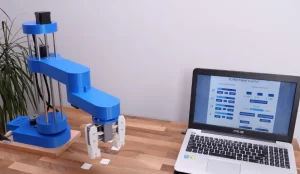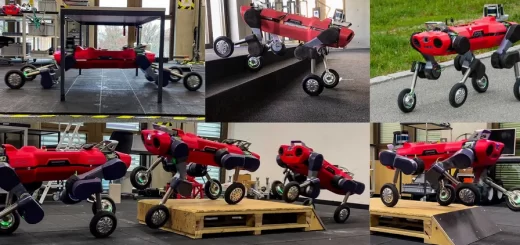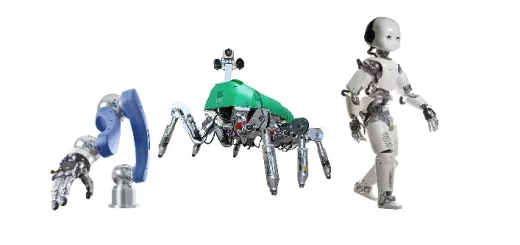Scara robot advantages and disadvantages and What is the structure of the SCARA robot?
SCARA robots are valuable tools for automating repetitive tasks that require high precision and speed in a controlled environment. They are common in industries like electronics, food processing, and pharmaceuticals.
What are SCARA robots?
SCARA stands for Selective Compliance Articulated Robot Arm (or Selective Compliance Assembly Robot Arm). It’s a type of industrial robot commonly used in manufacturing, pick-and-place tasks, and assembly lines.
Similar to a human arm, SCARA robots have two linked arms that rotate at specific joints that allow for a wide range of motion within their horizontal workspace. They can pick up objects, move them around, and place them with great accuracy, and flexible movement within their designated reach. It’s designed for tasks requiring high speed and precision, particularly assembly lines.
SCARA robots are designed to be flexible in the horizontal plane (X and Y axis) for precise positioning. This allows for slight adjustments during tasks like inserting a peg into a hole, ensuring a perfect fit. However, they are rigid in the vertical plane (Z axis) for stability.
Features of SCARA robots
- Their speed and precision make them perfect for quickly and accurately moving objects from one location to another.
- The ability for slight compliance helps with delicate assembly tasks.
- SCARA robots have a compact design that allows them to operate efficiently in tight spaces.
What can SCARA robots do?
SCARA robots are the go-to machines for many industrial tasks that require speed, precision, and handling of smaller parts. Their strengths lie in these areas:
- SCARA robots excel at efficiently picking up objects from one location and placing them precisely in another. This makes them ideal for assembly lines where components need to be accurately positioned for further processing.
- Their fast and precise movements allow SCARA robots to sort objects based on size, color, or other features. This is useful in applications like product packaging or quality control.
- The ability to handle delicate parts and make precise movements makes SCARA robots well-suited for intricate assembly tasks. They are commonly used in electronics manufacturing to assemble circuit boards or other small components.
- Some SCARA robots can be equipped with tools for dispensing liquids or adhesives with high accuracy. This is useful in tasks like applying glue during assembly or filling containers with precise amounts of liquid.
- Within their workspace, SCARA robots can move materials around, such as feeding parts into machines or transferring them between workstations.
- Their precise movements allow them to perform delicate testing procedures or visual inspections on products.
- SCARA robots can handle delicate packing tasks or arrange items onto pallets for shipping due to their precise movements.
SCARA Robot Advantages
SCARA (Selective Compliance Articulated Robot Arm) robots are known for their speed, precision, and affordability, making them ideal for various industrial tasks. Their simpler design allows for quick and precise movements, perfect for repetitive tasks in assembly lines.
SCARA robots are smaller than other industrial robots, saving valuable floor space. Their simpler design makes them less expensive to purchase and maintain than other industrial robots. Their simpler design makes them easier to program and integrate into existing production lines.
SCARA robots are known for their user-friendly programming and operation. This makes them ideal for a variety of applications without needing extensive expertise in robotics. SCARA robots are known for their zippy movements and pinpoint accuracy. Their simpler design allows for faster cycle times and highly repeatable movements, making them ideal for tasks requiring consistent precision.
SCARA Robot Disadvantages
SCARA robots can’t handle heavy objects compared to other industrial robots. Their arm structure restricts their movement to a more horizontal plane, limiting their reach and flexibility. They are best suited for repetitive tasks in a controlled environment and may not be ideal for tasks requiring complex movements or changing environments.
SCARA robots are designed for handling lighter objects. While some stronger models exist, their payload capacity is lower compared to six-axis industrial robots. Due to their simpler design, SCARA robots are not as adaptable as six-axis robots. They struggle with tasks requiring complex movements or working in unstructured environments. The flip side of their compact design is a restricted work envelope. They can only reach within a specific area, limiting their use for tasks requiring a wider range of motion.
SCARA robots excel in applications requiring speed, precision, and handling of smaller parts within a defined work area. Their affordability and compact size make them a popular choice for various industries like electronics assembly and food processing. However, their limited reach and payload capacity make them less suitable for tasks requiring more flexibility or handling heavier objects.
You can subscribe to Science Online on YouTube from this link: Science Online
You can download Science Online application on Google Play from this link: Science Online Apps on Google Play
SCARA robot applications, What is a SCARA robot used for? and How many axis is a SCARA robot?
Serial Robots review, advantages, disadvantages and what can serial robots do?
Collaborative robot arm (cobot robots) applications, uses, advantages and disadvantages
Automation in manufacturing uses, advantages and disadvantages
Industrial robot (Auto industry) uses, advantages and disadvantages




